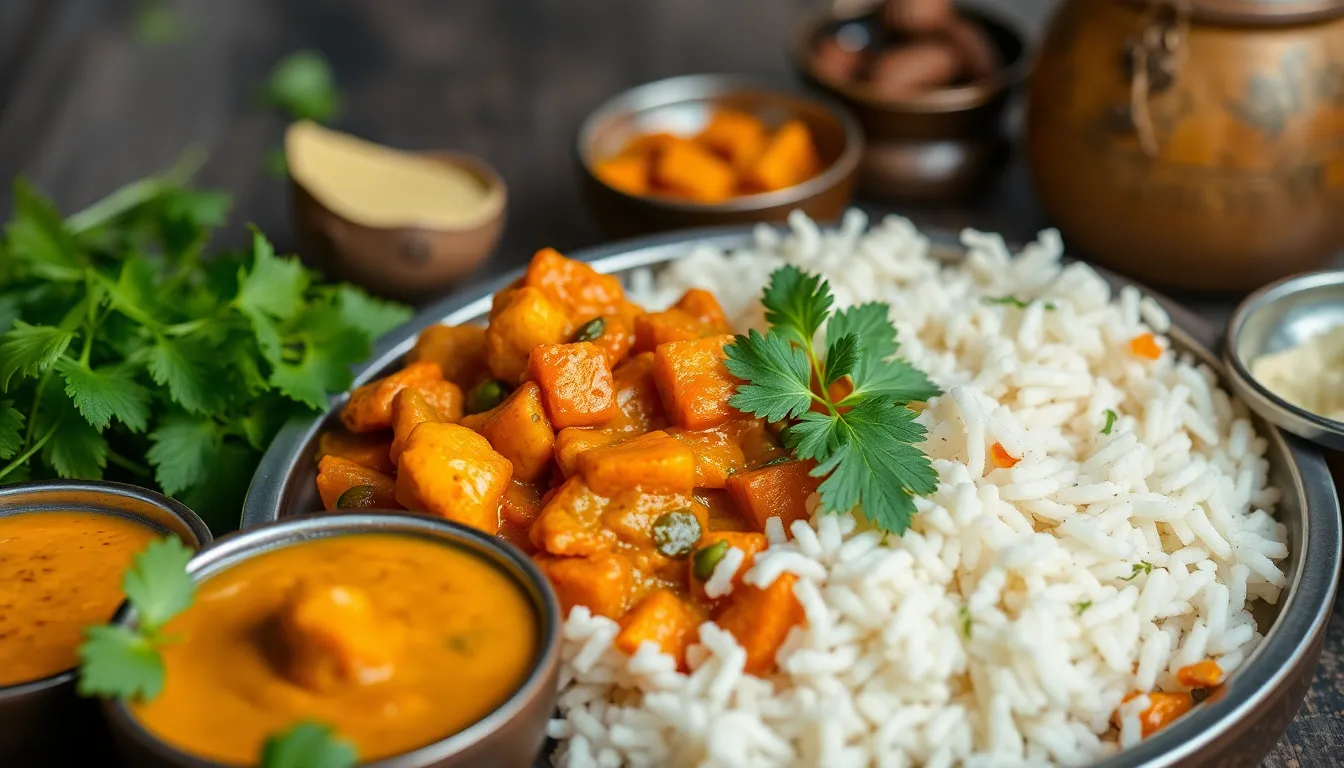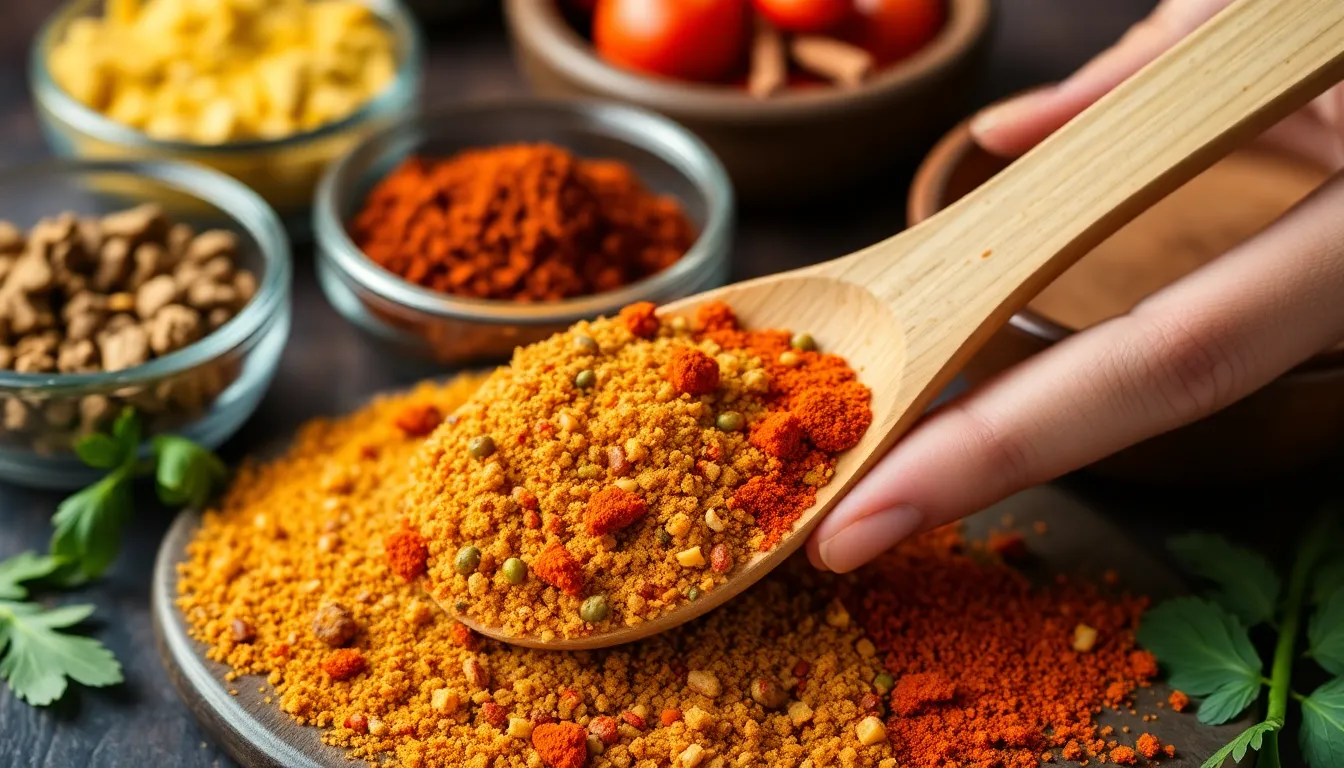The Health Benefits of Traditional Indian Cooking: Eat Well, Live Well
Introduction: A Culinary Journey to Wellness
Traditional Indian cooking is a vibrant tapestry woven with a multitude of flavors, textures, and aromas that not only tantalize the taste buds but also promote health and well-being. With its deep roots in history and culture, Indian cuisine offers a holistic approach to eating that emphasizes the connection between food and health.
In today’s fast-paced world, where convenience often trumps nutrition, the importance of healthy eating cannot be overstated. Traditional Indian cooking, with its emphasis on natural ingredients, mindful preparation, and balanced meals, provides a roadmap to a healthier lifestyle.
In this article, we will explore the myriad ways in which traditional Indian cooking promotes health and wellness, unveiling the secrets of its rich ingredients, cooking techniques, and holistic philosophy.
Section 1: The Rich Tapestry of Indian Ingredients
1.1 The Spice Spectrum: Nature’s Healing Agents
Spices are the soul of Indian cooking, not just for flavor but for their incredible health benefits. Here are some of the most commonly used spices and their healing properties:
- Turmeric: Known for its anti-inflammatory and antioxidant properties, turmeric contains curcumin, which has been linked to reduced risk of chronic diseases.
- Ginger: A powerful digestive aid, ginger can help alleviate nausea and reduce inflammation.
- Cumin: Rich in iron and beneficial for digestion, cumin seeds boost metabolism and improve gut health.
- Coriander: Helps in lowering blood sugar levels and has anti-inflammatory effects.
- Cardamom: Known for its anti-bacterial properties, it also aids in digestion and can help alleviate bad breath.
1.2 Freshness is Key: The Role of Seasonal Produce
Incorporating seasonal and local ingredients into your meals ensures you are getting the freshest produce, which is often richer in nutrients. Here’s why seasonal produce is essential:
- Enhanced Flavor: Seasonal fruits and vegetables are picked at their peak ripeness, providing the best flavor and nutrition.
- Nutritional Benefits: Seasonal foods are often fresher and contain more nutrients than out-of-season produce that has traveled long distances.
- Environmental Impact: Eating locally supports local farmers and reduces the carbon footprint associated with transporting food.
1.3 Legumes and Whole Grains: The Foundations of Nutrition
Legumes and whole grains are staples in Indian cuisine, providing a wealth of nutrients:
- Lentils: A great source of protein and fiber, lentils aid in digestion and help regulate blood sugar levels.
- Chickpeas: High in protein and essential vitamins, they support heart health and weight management.
- Whole Grains: Varieties like brown rice, quinoa, and millets are rich in fiber, which helps in maintaining gut health and preventing diseases.
Section 2: Cooking Techniques That Preserve Nutrients
2.1 Slow Cooking: A Flavorful Way to Retain Nutrients
Slow cooking is a traditional method in Indian cuisine that allows flavors to develop and nutrients to be preserved. Techniques like dum cooking (slow cooking in sealed pots) and steaming are commonly used:
- Dum Cooking: This method traps steam to cook food slowly, enhancing flavors and retaining moisture and nutrients.
- Steaming: A gentle cooking method that helps maintain the integrity of vitamins and minerals in vegetables and grains.
2.2 Fermentation: The Gut Health Booster
Fermented foods play a significant role in Indian cooking, providing numerous health benefits:
- Dosa: Made from fermented rice and lentil batter, dosa is rich in probiotics that support gut health.
- Idli: These steamed rice cakes are light and nutritious, promoting a healthy digestive tract.
- Yogurt: A staple in many Indian meals, yogurt is packed with probiotics that enhance digestion and boost immunity.
Section 3: Balancing Flavors for Holistic Wellness
3.1 The Art of Ayurveda: A Guide to Balanced Meals
Ayurveda, the ancient system of medicine in India, emphasizes balance in all aspects of life, including diet. According to Ayurvedic principles, the six tastes—sweet, sour, salty, bitter, pungent, and astringent—should be incorporated into each meal:
- Sweet: Provides energy and nourishment.
- Sour: Aids in digestion and stimulates appetite.
- Salty: Balances the body’s fluids and enhances flavors.
- Bitter: Detoxifies and supports liver function.
- Pungent: Stimulates circulation and digestion.
- Astringent: Helps to tighten tissues and improve digestion.
3.2 Portion Control: Eating Mindfully the Indian Way
Traditional Indian meals are often served in smaller portions and encourage communal eating, which fosters mindfulness:
- Smaller Plates: Using smaller plates can help control portion sizes and prevent overeating.
- Communal Eating: Sharing meals promotes a sense of community and allows for a variety of flavors, enhancing satisfaction.
- Mindfulness: Taking time to savor each bite can lead to improved digestion and a greater appreciation for food.
Section 4: A Glimpse into Popular Traditional Dishes
4.1 Nutrient-Packed Favorites: A Table of Healthful Indian Dishes
| Dish Name | Main Ingredients | Key Health Benefits |
|---|---|---|
| Dal Tadka | Lentils, spices, onion, tomato | Rich in protein and fiber, aids digestion. |
| Palak Paneer | Spinach, paneer, spices | High in iron and calcium, boosts bone health. |
| Chana Masala | Chickpeas, onion, tomatoes, spices | High in protein and fiber, supports heart health. |
| Vegetable Biryani | Rice, mixed vegetables, spices | Provides essential nutrients and antioxidants. |
| Raita | Yogurt, cucumber, spices | Aids digestion and provides probiotics. |
4.2 Special Occasions: Healthy Celebrations
Indian festivals are characterized by a plethora of dishes that are both indulgent and nutritious. Here are some examples:
- Pongal: A sweet and savory dish made with rice and lentils, often flavored with cardamom and nuts, celebrating the harvest.
- Diwali Sweets: Made with natural ingredients like jaggery and nuts, these sweets can be healthier alternatives to processed candies.
- Holi Special Thandai: A refreshing drink made with milk and nuts, offering a healthy dose of nutrients.
Conclusion: Embracing Wellness Through Tradition
Traditional Indian cooking is a treasure trove of health benefits, from nutrient-dense ingredients to mindful preparation techniques. By embracing these culinary practices, we can enhance our well-being and foster a deeper connection with our food.
Incorporating traditional Indian cooking into our daily lives not only promotes physical health but also enriches our cultural heritage. So, why not start today? Share your favorite traditional Indian recipes and health tips, and let’s embark on this journey to wellness together!
Additional Resources:
- Suggested Reading:
- The Complete Book of Indian Cooking by Julie Sahni
- Indian-ish: Recipes and Antics from a Modern American Family by Priya Krishna
- Healing Spices: How to Use 50 Everyday and Exotic Spices to Boost Health and Well-Being by Bharat B. Aggarwal
- Links to Recipe Archives
- Cooking Classes for More Learning
FAQs: Quick Answers to Common Queries
- What are the health benefits of turmeric? Turmeric is known for its anti-inflammatory and antioxidant properties, which can help reduce the risk of chronic diseases.
- How can I incorporate more legumes into my diet? Try adding lentils or chickpeas to salads, soups, or stews for added protein and fiber.
- Is Indian food always spicy? No, not all Indian food is spicy. Spice levels can be adjusted according to personal preference.
- What are some healthy Indian snacks? Options include roasted chickpeas, vegetable pakoras made with chickpea flour, or yogurt with fruits and nuts.
- How do I make my meals more balanced? Aim to include a variety of tastes and food groups, such as whole grains, proteins, and fresh vegetables in each meal.




